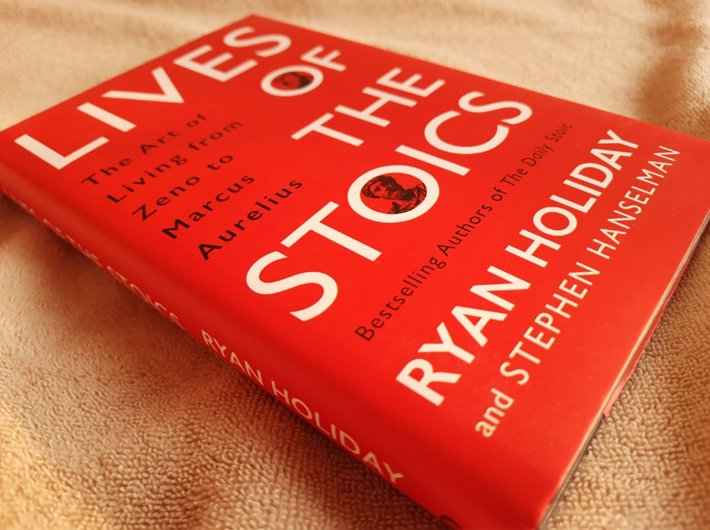These life studies of 26 stoics of ancient times provide a blueprint to build an inner citadel
Lives of Stoics
The Art of Living from Zeno to Marcus Aurelius
By Ryan Holiday and Stepehn Hanselman
Hachette India, xv+329 pages, Rs 599
Philosophy is usually seen as an academic matter, a subject fit for classrooms, seminars and weighty books – and not fit for the world outside. That need not be the case. Many philosophers, starting with the prototype, Socrates, did not write abstruse treatises but lived life in a philosophically engaging manner, and thus came to be called philosophers. As Ryan Holiday and Stehen Hanselman write in the introduction to their latest collaboration, Lives of Stoics: “If philosophy is anything, it’s an answer to that question—how to live.”
When French philosopher Pierre Hadot revived the notion of ‘philosophy as a way of life’, a school of ancient Greco-Roman philosophy he had in mind (among other things) was stoicism. It began its life in Greece about 400 years Before Common Era, and has been a kind of alternative religion for many over the two millennia. Its basic attitude is quite appealing to people with a certain bent of mind: No event is good or bad in itself but our thinking makes it so. In other words, for stoics there are no misfortunes as such. Also, following Socrates, stoics’ keywords are reason and virtue. In short, live ethically, guided by reason alone, be prepared for twists and turns of fate, be resilient and at peace within. Such advices – and this is crucial – are backed up by a variety of exercises aimed at inculcating the right habits of mind. Not only sages and saints but also many US presidents and army chiefs have found inspiration and sustenance from the words of Stoic sages. In recent decades, stoicism is flourishing again.
Ryan Holiday, in his early 30s, is among the new band of stoicism evangelists. Highly successful in the world of marketing at a young age, he gave it up and turned to this philosophy [Read more about him in this New York Times profile]. In 2014 came out The Obstacle is the Way. It was followed by two similarly packaged titles, Ego is the Enemy (2016) and Stillness is the Key (2019). While they all deal with stoic themes along with other spiritual and philosophical traditions, The Daily Stoic (co-authored with Stephen Hanselman, 2016) is devoted solely to stoicism. Divided into three parts (arguably inspired by Hadot’s study of Marcus Aurelius) – ‘Discipline of Perception, Discipline of Action, and Discipline of Will, the book presents motivational quotations from leading stoic thinkers, one for each day of the year. Along with the book came the website, The Daily Stoic [https://dailystoic.com/] [a good place to begin in case the reader wants to be first better acquainted with the basic tenets of stoicism], and later a companion volume, The Daily Stoic Journal (2017).
His latest, again a joint venture with Hanselman, stands out amid a slew of books in recent years with ‘stoicism’ in the title. Lives of Stoics illustrates stoicism through the lives of 26 stoics of ancient Greece and Rome (the list unfortunately includes only one woman). Since stoicism is an art of living and not a matter of textual, discursive arguments, it makes sense to study how it guided its leading practitioners through the vicissitudes of lived life. More importantly, lay readers of stoicism know of barely a few stoics of those days: Zeno, the founder, Cleanthes, Seneca, Musonius Rufus, Epictetus, and of course Marcus Aurelius. Holiday and Hanselman expand the galaxy and introduce likes of Porcia Cato, ‘The Iron Woman’ (70 BC – 43-42 BC, Rome), daughter of Cato the Younger, Rome’s Iron Man, and wife of Brutus (better known through Julius Caesar’s words via Shakespeare, “Et tu Brutus?”).
What the authors aim is “to elucidate the moral lessons that can be drawn from the lives of these complicated figures”. Though they consult obvious sources like Diogenes Laertius’ Lives of the Eminent Philosophers, their priority is not factual accuracy but capturing the moments where the wisdom of stoicism made contact with lived life.
One can already imagine a follow-up title covering Lives of Contemporary Stoics. There have been many (though they may or may not have identified themselves as such), from Mahatma Gandhi toJames Stockdale, the US Navy vice admiral who put the advice of Epictetus to great use in Vietnam War. Moreover, there are a good deal of fictional characters who fit the description, for instance, Dr Hannibal Lecter and Conrad Hensley – not to forget William Stoner.
The bottom line for the book and the reader is “to heed this counsel [of philosophy], and to struggle with what Seneca described as the most important job of a reader of philosophy—the act of turning words into works. To turn the lessons of the lives of the men and women who came before us, their living and their dying, their succeeding and their failing, into actions in the real world.”



